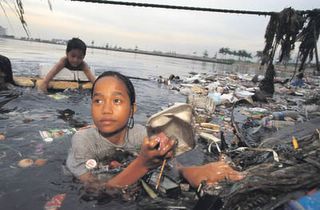
iiiee building, Lund University
Working our personal networks is something we all need to improve to create the change we want. A useful perspective in this context is to understand organisations as a social construction or a story we tell and re-tell. How we perceive an organisation and its future is actually what it becomes, like a mental film that directs our intentions and emotions.
Here, the art of formulating constructive questions is in itself an important change factor. It steers our focus when searching new information to act upon. Information that refines the story of what the organisation is all about. In turn, building and maintaining a powerful story supporting the mission of an organisation calls for more effective forms of experience sharing, using the Internet as a communication tool many-to-many, rather than just one-to-many. Framing it within a distance education course is one way of doing this.
Now, if experience sharing is important, how to promote the virtual networks supporting it? In other words, what gives life to a distance education course? The following account is based on experiences from the ICP-course presented in “5. ICP course in 52 countries”.
1) Personal motivation
Motivation fuelled by accessing a virtual arena that is global in participant outreach matching the global scope of the ICP-course. An arena that converts passion into concrete action, opens up for new forms of alliances outside the course curriculum, and is used for in-house competence development.
2) Experience sharing
Sharing ideas on-line in an electronic discussion forum or chat is more personal, constructive and democratic than most participants imagined. Personal as written text can be very personal. Constructive as questions and answers builds a common understanding through reflection. Democratic when ´one person-one voice´ is practiced in reality, as everybody is able to write comments at the same time.
3) Course administrator
The administrator’s role in distance education is to provide a functioning web-technology, web-pedagogy and web-instructions. The web-based educational platform has to be reliable, with an intuitive self-explanatory user interface. The web-pedagogy has to allow for different learning styles. The web-instructions has to be clear enough to stand alone, with all course information accessible 3-clicks away, and stress the point that the team is the participant’s greatest asset.
4) Course content
The course content is important, but not the most important driver for completing a distance education course. Presenting the content has to be done in an inspiring, practicable and chewable way. Inspiring as to provide a movement and direction when filling the gap between the present and a desired future. Practical as to answer up to the key question for the participant: what is in it for me? Chewable as to use the Internet as a communication tool rather than information dissemination device.
What does not give life to a distance education virtual network?
Naturally, this is a large question. Sticking to the four aspects presented above, I would say that lack of personal purpose, collaboration possibilities, supporting organisation and inspirational material are crucial elements to take into account and deal with.
Working virtual networks is vital for building a learning organisation. Read more in the coming follow-up article on the IST-course presented in “3. Sustainable tourism in Costa Rica”.



